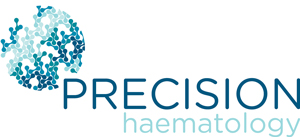A stem cell transplant is a process that involves replacing blood-forming cells called stem cells that have been damaged as a result of high doses of chemotherapy or radiotherapy. High dose therapies are sometimes used because they give some people a better chance of cure or long-term control of their disease. Sometimes stem cells need to be replaced because they are diseased (for example in leukaemia) or defective (for example in aplastic anaemia).
What are stem cells?
Stem cells are primitive blood-forming cells that normally live in the bone marrow. They divide and mature into all the different types of blood cells (red cells, white cells and platelets), including the cells of our immune system. They are the source of all of our blood cells and are therefore vital for our survival. Stem cells can be collected (harvested) directly from the bone marrow (bone marrow transplant), or they can be mobilised out of the bone marrow and collected from the bloodstream (peripheral blood stem cell transplant). Stem cells can also be collected from umbilical cord blood of newborn babies (cord blood transplant).
Types of transplants
There are two main types of transplants – autologous and allogeneic.
An autologous transplant uses the patient’s own stem cells, collected in advance and returned to them after they receive high doses of chemotherapy. In an allogeneic transplant the stem cells are donated from another person, a genetically matched stem cell donor. While all transplants are serious procedures, allogeneic transplants are more complicated and therefore carry more short and long-term risks than autologous transplants.
Over 1,000 stem cell transplants are carried out in Australia each year. The majority of these (over two thirds) are autologous transplants.
The type of transplant you are given depends on a number of factors. These include the type of disease you have, your age, general health, the condition of your marrow and whether you would benefit by receiving donated stem cells, or whether your own stem cells can be used.
A stem cell transplant is not necessarily the best option for everyone. The transplant process is demanding both physically and emotionally, and some people may not be fit enough to tolerate it. Also, many people don’t need a transplant and can be successfully treated using a less intensive approach. For others a transplant is the only option which offers a prospect of cure, or long term survival.
Your doctor will spend time discussing with you and your family what he or she feels is the best option for you and your particular situation.

